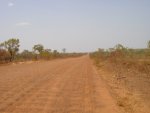Iain_U1250
Explorer
I've just come back from the Brisbane Camping and Caravan show, and came across this product.
http://www.duraliteaustralia.com.au/applications.php
It seems to be the answer to everything I need for fitting out the interior - and it is incredibly light - a 3/4"x4'x8' sheet weights 11.5kg - and from the samples I saw and the materials it seems very easy and give very professional results. What's more, it looks very cost effective as well.
Love to hear from anyone who has used it and what the results were.
http://www.duraliteaustralia.com.au/applications.php
It seems to be the answer to everything I need for fitting out the interior - and it is incredibly light - a 3/4"x4'x8' sheet weights 11.5kg - and from the samples I saw and the materials it seems very easy and give very professional results. What's more, it looks very cost effective as well.
Love to hear from anyone who has used it and what the results were.
Last edited:

